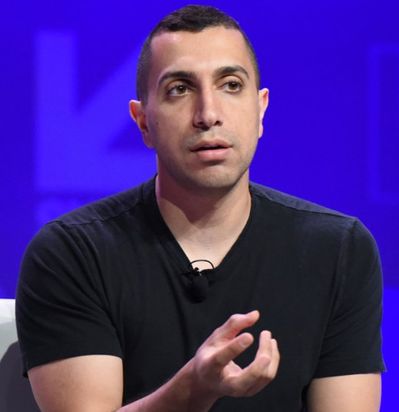Sean Rad : The Founding Memeber and Former CEO of Tinder
Digitalization has made every activity so convenient for us that we can literally do anything with a swipe of our fingers. Moreover, the younger generation prefers doing everything through the internet, starting from shopping, payment, booking shows, and even, finding a perfect date unless they happen to meet under the mistletoe. Now, how great it would be to use a mobile app where you can find a perfect match only by swiping left or right? Tinder is one such mobile dating app, using which you can chat with other users and find a ‘good match’ for yourself.
The app provides the option to swipe right if you like someone’s profile and the other way around if you don’t like any. The app was launched in 2012, and in less than a couple of months, it grew to a million users. Tinder was founded by Sean Rad, along with Justin Mateen, Jonathan Badeen and many other executive members. Rad was also the former CEO of the company. One of the founding members, Whitney Wolfe, left Tinder after some time to work on another dating app, Bumble.
Early Life
Born into an Iranian family, Rad moved to Los Angeles with his parents in 1970s and settled in Beverly Hills. His parents worked in the technology industry, which might be one reason why he knew tech very well. Since his childhood, Rad was passionate about doing something big in life and making his life worthy.

When Rad was in high school, he did an internship as an entertainment manager, and that’s how he realized that he can make money even from the things he enjoyed doing. Though Rad and Mateen went to different schools, they knew each other since they were fourteen.
Higher Education and Career
Rad started pioneering in the world of technology since he was just eighteen and launched Orgoo, his first startup that was envisioned to build a webmail service. Both Rad and Mateen went to the University of Southern California, but Rad dropped out after a couple of years, to explore the entrepreneurial world and developed a platform called Adly, in the mid-2000s.
These two young entrepreneurs, along with other members, launched Tinder in 2012 and promoted the app heavily in various college campuses. They knew very well, where they could grab the most attention, and thus, gained a billion swipes per day, within a couple of years of Tinder.
Success of Tinder
A year after the release of Tinder, the app received TechCrunch’s Crunchie Award for ‘Best New Startup of 2013’. In March 2013, the company realised the application was used only in a few localities, and hence, Alexa Mateen, social media director, promoted it in other college campuses as well. And by May 2013, Tinder became one of the top twenty-five social networking apps on the basis of users. The frequency of users kept rising, which made Tinder the first online dating app as one of the top five online utilized applications.
In 2014 Webby Awards, the company was named as ‘breakout of the year’, and by October 2014, the application finally incorporated swiping motion and processed more than a billion swipes per day. It made around twelve million matches per day, which is appreciable for a company, which is only two years old. In 2015, the company launched a new feature to let the user access the profiles they rejected earlier, but chatting of two users was only possible when both of them swiped right. Apart from this, a lot of new features were added and deleted from the app in 2015. Tinder’s main complementing site was Facebook, as the user needed to connect their Facebook account with the app for profile verification.
In September 2016, Tinder came in partnership with Vina, a social networking app, and tested ‘Tinder Boost’ in Australia. In October 2016, it went live around the world, which basically, allowed your profile to be on top in your area for 30 minutes. In the same month, Tinder announced the opening of their first office in Silicon Valley, such that to enhance the quality of the employees. In November 2016, the app introduced more freedom on the grounds of choosing gender, breaking the typical mindset of society. This feature raised the number of users by a hefty amount, and by 2018, Tinder had over 3.7 million paid subscribers. The company is now deciding to launch a lighter version of the app, called Tinder Lite, which will take relatively less storage space and consume lesser data.
Majority of the Tinder, today, is under the acquisition of IAC and its subsidiary, Match Group. Till 2018, Rad changed positions quite a number of times, stepping down from the position of CEO and getting back in the helm again. But, in August 2018 a lawsuit was filed against IAC by a group of Tinder employees including Rad. They are suing IAC of alleged stock information and seeking at least $2billion in damages.

Annasha Dey is an NIT student, who apart from studying engineering is also a content writer. She has a great interest in photography, writing, reading novels, and travelling as well. She is a foodie who loves socializing and hanging out with her friends. She is also a trained Kathak dancer and a big fashion enthusiast. Dey also loves watching TV series, which includes F.R.I.E.N.D.S. and Big Bang Theory. To be a better writer she prefers to read more













